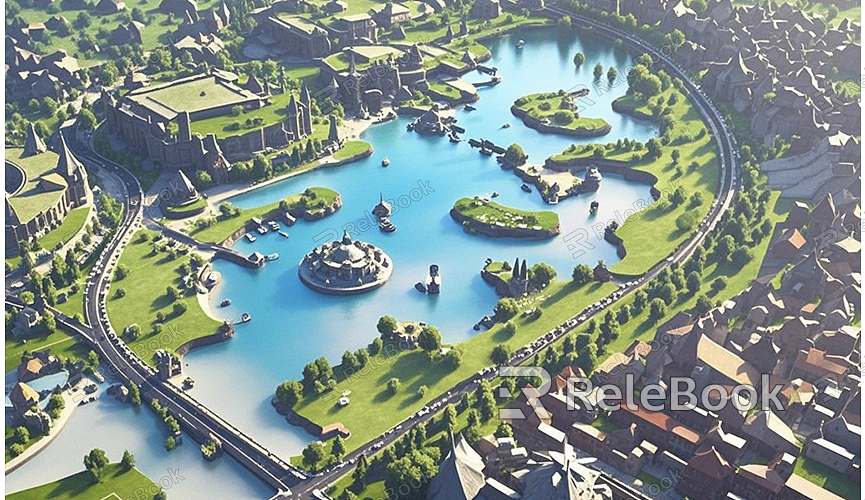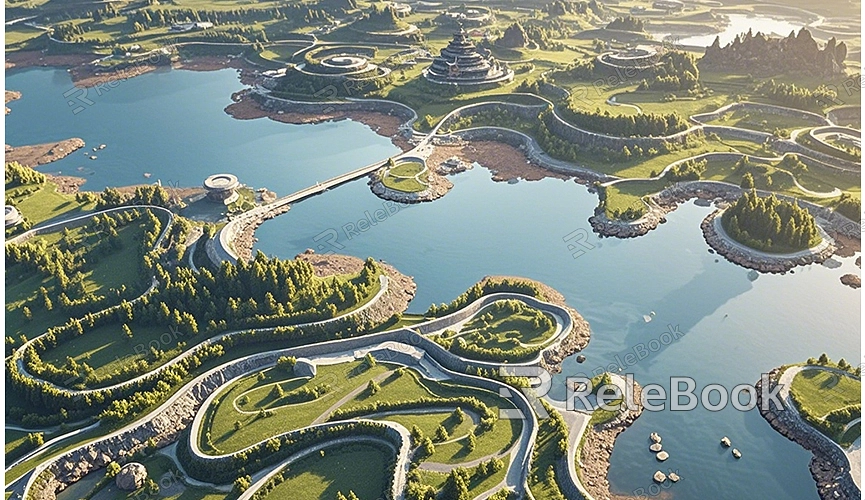How to render bird view blender
A bird's eye view is often used to showcase the overall layout of a scene, particularly in architectural design, urban planning, and game development. It provides a unique top-down perspective of a macro scene. Creating a bird's eye view in Blender can make your work visually striking and inspire more creativity. This guide will walk you through the steps to render a high-quality bird's eye view in Blender, helping you master this useful technique quickly.

Preparing the Scene Model
Before you start rendering, you need to prepare your scene model. The essence of a bird's eye view is to display the macro structure, so your model should include a significant amount of terrain or buildings to ensure the layout is clearly visible from a high vantage point. If you don’t have an existing scene, you can create one using Blender’s basic models or obtain high-quality 3D models from other resource libraries to speed up the process.
If you need high-quality 3D textures and HDRIs for creating models and virtual scenes, you can download them for free from [Relebook](https://textures.relebook.com/). For exquisite 3D models, visit [Relebook](https://3dmodels.relebook.com/), which offers a vast collection of premium 3D resources.
Setting the Camera Perspective
The key to a bird's eye view is the camera perspective setup. First, add a new camera in Blender and position it above the scene to ensure it can overlook the entire layout. Adjust the camera's height and rotation angle to achieve the desired top-down effect.
To capture more scene details, you may need to increase the camera’s focal length or adjust its field of view. Keep the camera aligned with the scene’s center to ensure the rendered image has good balance.
Adjusting Lighting Settings
Lighting significantly impacts rendering quality, especially in a bird's eye view where lighting and shadows can enhance the scene's depth and dimension. To make your bird's eye view more vivid, use a natural light source, such as adding a sun lamp in Blender.
Position the sun lamp to one side of the scene so that light can cast from an angled direction. Adjust the angle and intensity of the light to create soft shadows on buildings or terrain, enhancing the depth of the image.
Additionally, consider using HDRI maps for environmental lighting to improve realism. HDRI maps provide more natural light reflections and color tones for the environment.
Applying Materials and Textures
The choice of materials and textures is crucial for the effectiveness of a bird's eye view. When creating your bird's eye view, apply appropriate materials and textures to objects in the scene, such as buildings, ground surfaces, and trees. For example, use concrete or brick textures for buildings and grass, soil, or road textures for the ground.

In Blender, assign different materials to each object through the “Materials” option and apply detail textures using the “Textures” option. To enhance the scene's detail, use high-quality maps like normal maps and roughness maps to add realism to materials.
Rendering Settings
To achieve high-quality rendering, pay attention to your rendering settings. In Blender, the Cycles render engine is ideal for realistic ray tracing effects. Open the “Render Properties” panel and ensure that the sampling rate is set high enough to reduce noise and improve final render quality.
You can also enable Blender’s denoising feature to further eliminate noise from the rendering process. Denoising improves image purity without significantly increasing rendering time, especially useful for large-scale bird's eye view renders.
Post-Processing
After rendering, use Blender's compositor for post-processing. Adjust color, contrast, and saturation to make the image more vibrant. You can also add effects like subtle blurring or lens flares to enhance the scene's depth and visual impact.
If you're not familiar with Blender's post-processing features, you can import the rendered result into image editing software like Photoshop for further adjustments. Whether fine-tuning lighting details or adding extra visual effects, post-processing helps polish the final piece.
Rendering a bird's eye view in Blender is not overly complex if you master key steps such as camera perspective, lighting setup, material application, and rendering optimization. These techniques will help you create high-quality bird's eye views, whether showcasing architectural designs, urban layouts, or game scenes.
Finally, to make your bird's eye view stand out, don't forget to use high-quality 3D resources and textures. For top-notch 3D textures and HDRIs, visit [Relebook](https://textures.relebook.com/). For fine 3D models, check out [Relebook](https://3dmodels.relebook.com/), where you can find a wealth of premium 3D resources. I hope these tips bring more inspiration to your creative projects.

